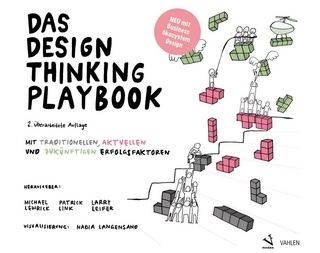
Digital Human Modeling and Applications in Health, Safety, Ergonomics and Risk Management
Springer International Publishing (Verlag)
978-3-031-61062-2 (ISBN)
This three-volume set LNCS 14709-14711 constitutes the refereed proceedings of the 15th International Conference on Digital Human Modeling and Applications in Health, Safety, Ergonomics and Risk Management, DHM 2024, held as part of the 26th International Conference, HCI International 2024, in Washington, DC, USA, during June 29 - July 4, 2024.
The total of 1271 papers and 309 posters included in the HCII 2024 proceedings was carefully reviewed and selected from 5108 submissions.
DHM 2024 method focuses on:
Part I: Digital Human Modeling for Design and Evaluation; User Experience and Assistive Technologies; User Experience, Communication, and Collaboration.
Part II: Healthcare Design and Support; Technology in Mental Health and Wellbeing; Artificial Intelligence and Health Applications.
Part III: Work, Safety, and Ergonomics; Ergonomics, Artificial Intelligence and Smart Technologies, Advanced Technologies for Training and Learning.
Part 1: Healthcare Design and Support: Comparison of the Accuracy of Markerless Motion Analysis and Optoelectronic System for Measuring Lower Limb Gait Kinematics.- Literature Review on Human-Automation Interaction: Relationship between Healthcare Automation & Human Error at Work.- NurseAid Monitor: An Ergonomics Dashboard to Help Change Position of Bedridden Patients.- Enhancing User Experience: Innovations in Blood Glucose Meter Design for Improved Efficiency and Convenience.- Review of Research Status and Development Expectation of Health Smart Clothing.- Inclusive Medicine Packaging for the Geriatric Population: Bridging Accessibility Gaps.- Experience Design Assisted in Improving the Efficiency of Adolescent Invisible Orthodontic Treatment.- Incorporating Regional Brain Connectivity Profiles into the Inference of Exposure-related Neurobehavioral Burden in Explosive Ordnance Disposal Veterans.- Improving the Accessibility and Legibility of Prescription Medicine Labels for the Elderly in China: A Study on Enhanced Design and Usability Testing. Part 2: Technology in Mental Health and Wellbeing: Switching Off to Switch On: An Ontological Inquiry into the Many Facets of Digital Well-being.- Understanding Chinese University Students' Perspectives on and Challenges with the Technology Based on Cognitive Behavioral Therapy for Insomnia: A Qualitative Exploration.- Chatbot-based Mood and Activity Journaling for Resource-oriented CBT Support of Students.- Emotion Recognition in Dance: A Novel Approach Using Laban Movement Analysis and Artificial Intelligence.- The Effectiveness of Culinary Therapy Platform System: A Study Examining Cooking Course as a Mental Health Intervention for College Students.- Analysis of Proactive Health Product Design Based on the Traditional Chinese Medicine Theory. Part 3: Artificial Intelligence and Health Applications: A Machine Learning Model for Predicting the Risk of Perinatal Mortality in Low-and-Middle-Income Countries: A Case Study.- AI in Healthcare and Medicine: A Systematic Literature Review and Reappraisal.- Development and Application of a Machine Learning-Based Prediction Model for 6-Month Unplanned Readmission in Heart Failure Patients.- Design and Optimization Strategy of a CNN aided Pre-Hospital Diagnosis System for Myocardial Infarction.- CardioRis: Predictive Application for Myocardial Infarction Incident Risk Assessment based on Blood Pressure-Glucose-Lipid Patterns.- 5G MEC+AI Pathology "Anti-Cancer Guardian": Design of Intelligent Gastric Cancer Auxiliary Diagnosis and Warning Platform for Smart Hospital System.- Study and Validation Protocol of Risk Prediction Model for Deep Venous Thrombosis after Severe Traumatic Brain Injury Based on Machine Learning Algorithms.
| Erscheinungsdatum | 04.06.2024 |
|---|---|
| Reihe/Serie | Lecture Notes in Computer Science |
| Zusatzinfo | XXIII, 346 p. 178 illus., 135 illus. in color. |
| Verlagsort | Cham |
| Sprache | englisch |
| Maße | 155 x 235 mm |
| Themenwelt | Mathematik / Informatik ► Informatik ► Betriebssysteme / Server |
| Informatik ► Software Entwicklung ► User Interfaces (HCI) | |
| Sozialwissenschaften | |
| Schlagworte | Artificial Intelligence in Medicine • Digital Health • digital human models • Healthcare • Human-Computer Interaction (HCI) • Human-technology modeling • User Interfaces |
| ISBN-10 | 3-031-61062-8 / 3031610628 |
| ISBN-13 | 978-3-031-61062-2 / 9783031610622 |
| Zustand | Neuware |
| Informationen gemäß Produktsicherheitsverordnung (GPSR) | |
| Haben Sie eine Frage zum Produkt? |
aus dem Bereich


